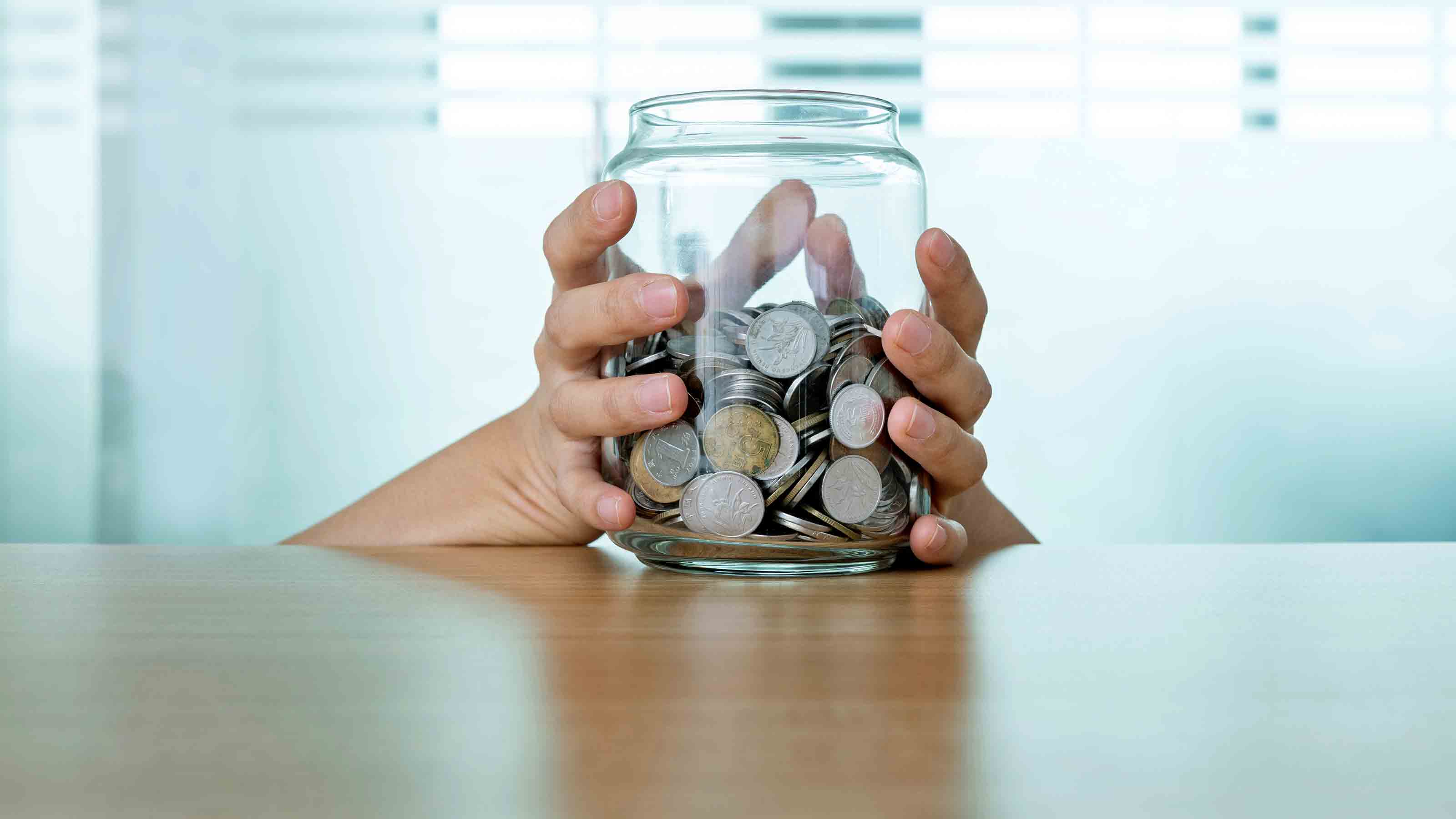Five Ways to Make Money From Spring Cleaning
Here's how to profit from unloading the stuff you no longer want.

It might not feel like it where you live, but spring is officially here. So it’s time for the annual clean associated with the season. This can be an opportunity to do more than just clear out cobwebs and sweep away the dust. Spring cleaning also can yield financial rewards.
As you declutter your home, you might unearth a goldmine of stuff you can sell or donate. Here are five ways you can unload items you no longer want for cash or tax benefits.
Sell your stuff online. There are sites galore that make it relatively easy to sell almost anything. Some even cover the cost of shipping, so you don’t have to worry about those fees eating into your profits.

Sign up for Kiplinger’s Free E-Newsletters
Profit and prosper with the best of expert advice on investing, taxes, retirement, personal finance and more - straight to your e-mail.
Profit and prosper with the best of expert advice - straight to your e-mail.
Books: BookScouter.com makes it easy for you to get the best price for you books. Simply type in the ISBN from your book and BookScouter.com scans prices from more than 40 book-buying sites to show you which ones are offering the best prices. Click on “sell here” next to the vendor of your choice to go to its site and sell your book.
Collectibles: One of the best places to get top dollar for your collectibles and small items of value is eBay. Click on the “register” link in the top left corner of the homepage to create an account. Then visit the site’s “Seller Center” to learn how to sell. You can list 50 items every month for free, and you’ll pay a 10% fee on each item when it sells. Research merchandise similar to what you plan to sell so you can price your wares competitively.
Clothing, handbags, shoes: Fashion resale site thredUP.com makes it easy to sell women’s and kids’ clothing, shoes and handbags. It sends you a pre-paid, pre-addressed “Closet Clean Out Bag” to fill with clothing that’s in good condition. You can earn up to 80% of the resale value in cash or shopping credit. If you have high-end men’s and women’s clothing, jewelry, watches and accessories, try your luck with luxury consignment site The RealReal. You earn up to 70% of the resale value in cash. The site will send you a shipping label or provide free pick-up in 16 major cities.
Electronics: You can sell used smart phones and Apple products worth $1 or more at Gazelle.com and get paid by check, PayPal or an Amazon gift card. Shipping is free. BuyMyTronics.com pays cash (and covers the shipping) for smart phones, digital cameras, tablets, game consoles and more. You can sell smart phones, tablets, laptops and video games to NextWorth.com for cash or take items to one its partner stores, such as Target, and get store credit. At uSell, you can sell smart phones, tablets, game consoles, video games and textbooks. Shipping is free, and you get paid by check or through PayPal.
Furniture: Of course, you can sell furniture through eBay, but you have to ship it. To avoid that hassle, you can list large items (for free) on your local Craigslist classifieds and buyers will come to you. Just be sure to insist on cash to avoid bounced checks. Take good photos, share key details and provide a concise description of what you’re selling.
Gift cards: If you have a gift card you won’t use, check online sites that buy unwanted cards. At GiftCardGranny.com, you can compare offers from several gift card resellers. You won't get the full value of your card. Cash paybacks are typically about 50% to 90% of a card’s value. But if someone gave the gift card to you, it's like getting free money.
Have a yard sale. If you don’t want to bother with selling your stuff online, you might fare just as well with a yard sale or garage sale. (You really should sell collectibles online, though, because you’ll reach a larger market and fetch a higher price.) Check out other yard sales, Craigslist, eBay and consignment shops before you have your sale to see how items are priced. Then set prices slightly higher than what you expect to get and be prepared to negotiate.
Take your stuff to a consignment store. Consignment stores make it easy to unload items you no longer want and get cash for them without the hassle of actually trying to sell them yourself. Look for upscale consignment stores that get a lot of traffic if you want top dollar for clothing, furniture, linens, china, glassware or artwork. Expect to split the profit 50/50 with the store. (Ask for details, though, because store policies vary.) See How to Sell Clothes on Consigment and What to Sell – And Not to Sell – at Consignment Shops for tips.
Sell gold and silver for scrap. If you have gold jewelry that isn’t valuable as an antique or a designer piece, you might make more selling it for scrap. Pure, 24-karat gold is valued at more than $1,300 per ounce right now, but that's the price for tradeable coins or bars. Scrap gold fetches far less. Keep in mind that most gold jewelry isn't pure, say 14-karat or 18-karat, so you’ll need to calculate the melt value to get a better sense of its worth as scrap. (The melt value reflects the actual amount of gold in the jewelry.) Even then a dealer will only offer you a percentage of the melt value. Quotes will vary widely, so get several. For example, if you have a gold ring with a melt value of $200, expect no more than perhaps 70% of the melt value -- so $140. See Smart Ways to Sell Your Gold to learn more.
Same goes for silver. Maybe you inherited several sterling trays you never use. Assuming the trays hold no particular value to collectors, you could get more by selling them for scrap rather than trying to sell them at a consignment store or online. As with gold, check with several metals dealers, both online and at storefront locations, to get quotes. Brace yourself for lots of low-ball offers. Pure silver is priced at about $20 per ounce right now, but you'll only earn a fraction of that because dealers factor in a profit for themselves as well as their costs to melt and refine the metal.
Donate to charity. Whether you want to be generous or simply don’t want to bother with selling your stuff, you may be able to reap financial rewards by donating items to qualified charities. If you itemize deductions on your federal tax return, you can claim the items you give as charitable contributions, which could lower your tax bill or increase your refund. Goodwill and The Salvation Army have valuation guides to help you establish a dollar amount to claim for the items you donate. If your noncash contributions total more than $500, you must complete Form 8283 and attach it to your tax return. Items valued at more than $5,000 generally require a written appraisal. Make a list of everything you donate, and be sure to get receipts from the charities.
You can donate items to Goodwill and The Salvation Army, or check with your local Better Business Bureau for reputable charitable organizations operating in your area. Some organizations such as Amvets, which supports veterans, will pick up items from your home.
Get Kiplinger Today newsletter — free
Profit and prosper with the best of Kiplinger's advice on investing, taxes, retirement, personal finance and much more. Delivered daily. Enter your email in the box and click Sign Me Up.

Award-winning journalist, speaker, family finance expert, and author of Mom and Dad, We Need to Talk.
Cameron Huddleston wrote the daily "Kip Tips" column for Kiplinger.com. She joined Kiplinger in 2001 after graduating from American University with an MA in economic journalism.
-
 Before You Invest Like a Politician, Consider This Dilemma
Before You Invest Like a Politician, Consider This DilemmaAs apps that track congressional stock trading become more popular, investors need to take into consideration some caveats.
By Ryan K. Snover, Investment Adviser Representative
-
 How to Put Together Your Personal Net Worth Statement
How to Put Together Your Personal Net Worth StatementNow that tax season is over for most of us, it's the perfect time to organize your assets and liabilities to assess your financial wellness.
By Denise McClain, JD, CPA
-
 Five Ways to Save on Vacation Rental Properties
Five Ways to Save on Vacation Rental PropertiesTravel Use these strategies to pay less for an apartment, condo or house when you travel.
By Cameron Huddleston
-
 How to Avoid Annoying Hotel Fees: Per Person, Parking and More
How to Avoid Annoying Hotel Fees: Per Person, Parking and MoreTravel Here's how to avoid extra charges and make sure you don't get stuck paying for amenities that you don't use.
By Cameron Huddleston
-
 How to Appeal an Unexpected Medical Bill
How to Appeal an Unexpected Medical Billhealth insurance You may receive a bill because your insurance company denied a claim—but that doesn’t mean you have to pay it.
By Rivan V. Stinson
-
 Amazon Prime Fees Are Rising. Here’s How to Cancel Your Amazon Prime Membership
Amazon Prime Fees Are Rising. Here’s How to Cancel Your Amazon Prime MembershipFeature Amazon Prime will soon cost $139 a year, $180 for those who pay monthly. If you’re a subscriber, maybe it’s time to rethink your relationship. Here’s a step-by-step guide to canceling Prime.
By Bob Niedt
-
 How to Haggle for Almost Anything
How to Haggle for Almost AnythingSmart Buying Learning how to haggle is an invaluable skill. These strategies will help you negotiate a better price for just about any product or service.
By Katherine Reynolds Lewis
-
 Disability Insurance Can Provide COVID Coverage
Disability Insurance Can Provide COVID CoverageCoronavirus and Your Money If you are concerned about long-term complications from COVID-19, consider disability insurance coverage.
By Rivan V. Stinson
-
 21 Things You Can't Return to Amazon — Either Online or In-Store
21 Things You Can't Return to Amazon — Either Online or In-StoreDid you know there are things you can't return to Amazon? Before adding these 21 items to your cart, be sure to read Amazon's return policy first.
By Bob Niedt
-
 How to Avoid a Charity Scam
How to Avoid a Charity Scampersonal finance Scammers never quit, even when you're trying to be altruistic. But you can avoid getting duped if you do your homework.
By Rivan V. Stinson